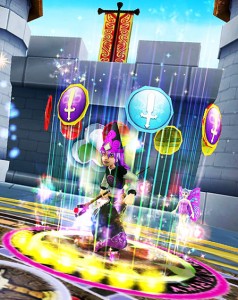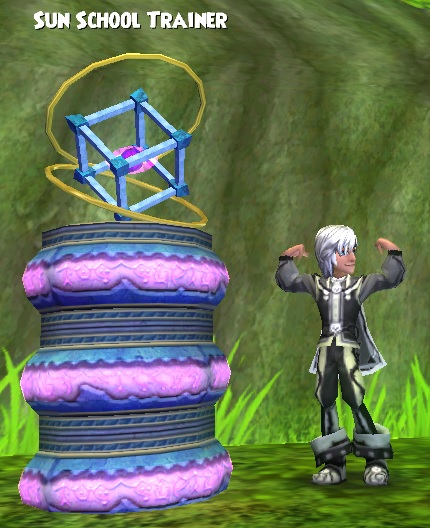June 20, 2021 September 3, 2023
Wizard101 Spell Classifications
Ever since the Celestia update, the game has evolved beyond blades, attacks, shields, and traps. Spell diversity continues to increase as levels get higher and higher. The goal of this guide is to help define the different Wizard101 spell classifications so that you can set up killer decks to take down bosses with ease.
 Single Damage Spells
Single Damage Spells
These spells are relatively self-explanatory. These spells seek to kill off bosses and minions. They come in different flavors. You have your solo hits such as Storm Owl and your Damage over Time (DOT) like Fire Elf. The Death school is unique in that it can convert half of the damage into self-healing thanks to drain spells.
AOE Damage Spells
Like the single damage spells, these spells seek to kill off bosses and minions. However, they also hit all of your opponents. Once again, the Death school has the ability to convert half of the damage of certain spells into self-healing.
Check out these guides for the AOEs available for each school!
Healing Spells
Again, these are self-explanatory spells. Use of these spells can give health back to an ally or minion. Much like damage spells, they tend to come in three flavors. They can be any of the three of these:
Solo Heals
E.g. Satyr

AOE Heals
E.g. Rebirth
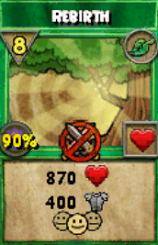
Heal Over Time (HOT)
E.g. Availing Hands
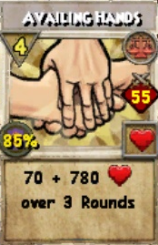
With the addition of Healing Current for Storm, Grendel’s Amend for Myth, and Celestial Intervention for Ice, every school has at least one solo healing spell. Fire is unique though, since the Fire School heals – Link and Power Link- not only put a HOT on the Caster, but also apply a DOT on an enemy. Regardless of school, the majority of healing spells most commonly used are Life spells, which, with a life mastery amulet, any wizard can use efficiently.
 Utility Spells
Utility Spells
Spells that cause different effects. These spells do not directly buff or heal players. They also do not debuff or directly damage monsters (the exceptions being Mana Burn and Supernova). They provide support to players in multiple ways. Spells such as Cleanse Charm or Cleanse Ward remove negative hanging effects off of wizards. On the other hand, spells such as Shatter of Enfeeble remove positive hanging effects off of mobs. While not directly involved in damage, they remove any obstacles to your attacks that may be present.
There are certain spells, such as Shift or Triage that affect DOTs. These either remove DOTs or shift them around. These spells are not damage mitigation because they do not reduce the damage, but rather change the way DOTs work in the round.
Some spells affect the number of pips a player or enemy can have. Mana burn can destroy pips from the enemy, delaying hits. Empowerment or Adapt helps the caster build pips and is best utilized by a supporting wizard. This allows them to build up to heals more rapidly. Donate Pip allows you to then move those pips to a target player, increasing the speed at which others can hit or heal.
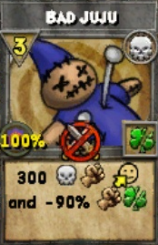 Debuffing Spells
Debuffing Spells
Debuffing spells are meant to weaken or prevent spells from being cast by the enemy team. Spells such as Bad Juju and Virulent Plague lessen the damage of enemy spells. The addition of Bad Juju has helped significantly with high ranking boss fights. The advantage of debuff spells is that they are not subjected to pierce and work well against AOE attacks.
Black Mantle and Smokescreen are debuffs that lower the accuracy of enemy spells. They increase the chance of causing an enemy’s spell to fizzle. These can buy more time for players to set up round winning attacks.
The last form of debuff is the dispels. There is one for each of the seven main schools (plus higher pip elemental and spirit dispels that dispel the relevant schools). They not only guarantee that the opponent’s spell will fizzle, but will also consume the pips that would be used to cast the spell. For example, if you cast a storm dispel when the opponent uses Storm Lord, not only does their spell fail to cast but seven pips will be consumed in the process.
 Crowd Control (CC) Spells
Crowd Control (CC) Spells
Crowd control spells work on controlling who and how the enemy attacks. They come in two flavors.
You first have Stun and Beguile. These spells control when an enemy will attack. Stuns prevent the enemy from attacking that round while beguile switches the monster’s allegiance briefly. While useful in mob fights, stun and beguiles have the downfall in that they don’t tend to work against bosses. Many spell such as Medusa and Storm Lord incorporate stuns into their attacks.
The second CC type spells are spells such as Taunt and Pacify. These spells either increase the threat generated by a player, causing the monsters to focus on that player, or decrease the amount of threat generated, focusing attention away from the player. Generating threat is best used by tanks such as Ice and Life wearing Jade gear. Decreasing threat is best used by supports such as Balance and Life (without Jade). The newest Ice and Life spells in Karamelle add these features into their own spells.
Check out this analysis on the newest Karamelle spells to see how these features work!
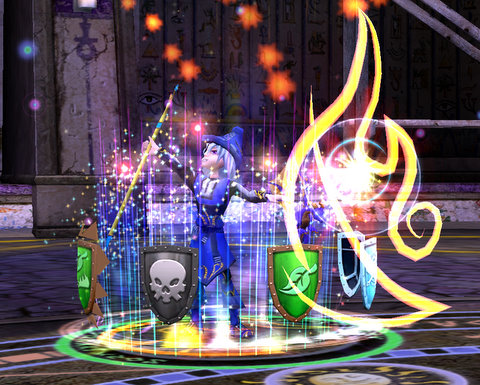 Damage Mitigation Spells
Damage Mitigation Spells
Damage mitigation spells are spells that reduce the damage on a single player. While debuffs benefit the entire team, damage mitigation spells affect one player (except for Shadow Sentinel which affects the entire team). These types of spells include shields such as Tower Shield and school-specific shields. They also include Fortify and Brace, Star School spells that reduce the amount of damage for four rounds on a single player. Finally, you have Shadow Sentinel which produces a shield on team wizards that reduce the amount of damage on them for three rounds.
The disadvantage that Damage Mitigation spells have in comparison to debuffs is that they are susceptible to pierce. At higher levels, this problem becomes more noticeable as the mobs’ and bosses’ pierce continues to increase.
Buffing Spells
Buffing spells are ones that increase the amount of damage a player’s spell can cause. They come in three flavors.
First, you have your blades. There is one for every school with Balance getting a universal blade instead of a school specific one. These universal blades can be used by any school. These blades can be enhanced with Sharpen, a Sun School enchantment learned in Azteca. You can build up blades, also known as blade stacking, to cause an even bigger attack. It should be noted that two of the same blade can’t be used more than once in a single attack. For example, two normal Storm Blades can’t be used together. If they differ by source or enchantment then they both can be used. For example, a normal Storm Blade, a sharpened Storm Blade, and a treasure card (TC) Storm Blade can all be used on a single attack.
You then have your traps. Just like blades, there is one for every school (except for Balance). There are also universal traps, the most popular being feint. Traps can be enhanced by potent trap, another Sun School spell learned in Azteca. Just like blades, you can trap stack. Once again, two of the same traps, such as two normal feints won’t be activated by the same hit. If they differ by source or enchantment, then they both can activate. Stacking of a normal Feint, TC Feint, and potent trap Feint is commonly used to rapidly take down bosses.
Finally, you have your Star School spells. You can learn Amplify, your first damage boosting aura, in Celestia. In Azteca, you can learn an aura that amplifies a certain school’s spell, at the cost of an increase in incoming damage from the opposing school (i.e. Storm aura will cause an increase in incoming Myth damage).
Sun School Enchantments
First introduced in Celestia, Sun School enchantments are a unique class of spell. Instead of being cast, they can be added to another card to provide a variety of different effects. Some, such as Colossal, increase the damage of the spell. Sun enchantments, such as Extraordinary, increase the pierce and accuracy of a spell.
Added in Azteca, you had Sharpen Blade and Potent Trap, spells that increase the damage output of a blade or trap by 10% respectively. Primordial and Radical increase the healing of a healing spell.
The Arcanum introduced two of the most used Sun School enchantments. Aegis, which protects a blade or shield, and Indemnity, which protects a trap or debuff. These enchantments are particularly useful against bosses that might cheat with Shatter or Cleanse Ward.
Check out this guide for how useful these spells can be!
The addition of the Sewers and Catacombs brought two of the most unique Sun enchantments in the game: Daybreaker and Nightbringer. These delay the casting of a spell by one round. The following round, they either come before the usual casted spell or after the usual casted spell. For example, enchanting Tempest with Nightbringer will delay the spell by one round. In the following round, you can blade like usual, and then Tempest will be cast immediately after that. Daybreaker also delays the spell but it is cast prior to the spell instead of after.
Finally, there are the Mutates. These are the most underused spells in the game, mostly because they provide no real benefits. These spells convert a spells school from one to another. For example, Mutate Wyvern transforms the Ice Wyvern to Fire Wyvern. While this may seem interesting, they remove the ability for the spell to be enchanted with a boost such as Colossal.
Check out this guide on Sun School mutations!
Polymorph Spells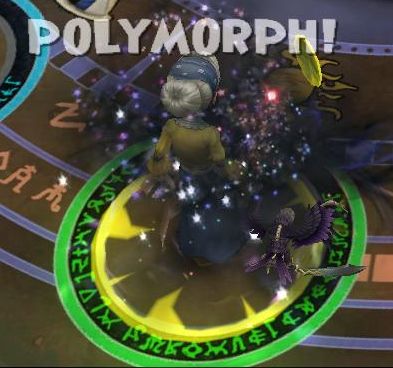
These Moon School spells transform the player into another creature for six rounds. While the player is transformed, their health, resistances, weaknesses, and deck are all changed. For example, Polymorph Draconian transforms the player into a fire Draconian for six rounds. This causes the player to have an increased Fire damage output and a weakness to Ice and Storm Spells. They also receive Fire spells, some of which are unique to the Polymorph form.
These TCs can be useful for low-level wizards in worlds such as Marleybone and Krokotopia. That’s because these Polymorph forms increase the health of the player and provide more powerful spells than those that may already be available for the player. Beyond that, Polymorph spells hold no other purpose, other than for getting the “Masters of Shapes” badge. Check out this guide to learn a little bit more about Moon magic!
Conclusion
As you can see, the combinations of spells are limited only by your imagination. It is worth noting that many spells can fit into multiple classes. Some spells like Storm Lord are damage and CC. Try out different combos and see what works for you!







